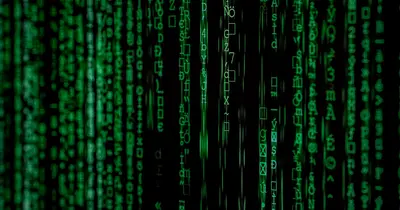🔬 Forensic Analysis Tools and Techniques on AlmaLinux: Become a Digital Detective!
Ever wanted to be like those cool TV detectives who solve crimes using computer evidence? 🕵️♂️ Well, today’s your lucky day! We’re turning you into a digital forensics expert who can investigate security incidents, analyze system artifacts, and uncover the truth about what happened on your AlmaLinux system! Think CSI, but for servers and with way more Linux commands! Let’s solve some digital mysteries! 🔍✨
🤔 Why are Forensic Analysis Tools Important?
Digital forensics is like being Sherlock Holmes for computers - you look for clues, analyze evidence, and piece together what really happened! It’s absolutely ESSENTIAL for modern security! 🔎
Here’s why forensic analysis is your superpower:
- 🕵️ Incident investigation - Find out exactly what attackers did
- 📊 Evidence collection - Gather proof for legal proceedings
- 🔍 Root cause analysis - Discover how breaches happened
- 🛡️ Attack attribution - Identify who was responsible
- 📝 Timeline reconstruction - Know the sequence of events
- 💡 Prevention insights - Learn how to prevent future attacks
- ⚖️ Legal compliance - Meet regulatory requirements
🎯 What You Need
Before we start our forensic adventure, make sure you have:
✅ AlmaLinux 9 system with root access
✅ Basic command line skills - You can navigate like a pro!
✅ Understanding of file systems - Know how Linux stores data
✅ Network connectivity - For downloading forensic tools
✅ At least 10GB free space - For forensic images and tools
✅ Detective mindset - Ready to solve digital mysteries! 🕵️♀️
📝 Step 1: Installing The Sleuth Kit (Essential Forensic Tools)
The Sleuth Kit is like getting a complete detective toolkit - it has everything you need to investigate digital crimes! Let’s get it:
# Update your system first (fresh tools work better!)
sudo dnf update -y
# Install EPEL repository for extra forensic tools
sudo dnf install epel-release -y
# Install The Sleuth Kit and related forensic tools
sudo dnf install sleuthkit -y
# Install additional forensic utilities
sudo dnf install file hexdump binutils strace ltrace -y
# Verify installation
tsk_version
# You should see: The Sleuth Kit ver X.X.X
echo "🎉 Your forensic toolkit is ready!"🌟 Amazing! You now have professional-grade forensic tools at your fingertips!
🔧 Step 2: Setting Up Your Forensic Workstation
Let’s create a proper forensic investigation environment:
# Create forensic working directory
sudo mkdir -p /forensics/{cases,tools,evidence,reports}
# Set up proper permissions
sudo chown -R $USER:$USER /forensics
chmod 755 /forensics/*
# Create case management structure
mkdir -p /forensics/cases/$(date +%Y-%m-%d)-investigation
# Create our first case directory
CASE_DIR="/forensics/cases/$(date +%Y-%m-%d)-investigation"
echo "📁 Case directory created: $CASE_DIR"
# Install additional analysis tools
sudo dnf install python3-pip -y
pip3 install --user volatility3 # Memory analysis tool💡 Pro Tip: Always work in organized case directories - it makes investigation much easier!
🌟 Step 3: Basic File System Analysis
Let’s learn how to examine files like a forensic expert:
# Navigate to your case directory
cd /forensics/cases/$(date +%Y-%m-%d)-investigation
# Basic file analysis - examine a suspicious file
echo "This might be malicious" > suspicious_file.txt
# Get detailed file information
file suspicious_file.txt
# Output: suspicious_file.txt: ASCII text
# Check file metadata with stat command
stat suspicious_file.txt
# Shows: size, timestamps, permissions, inode info
# Calculate file hashes (digital fingerprints)
md5sum suspicious_file.txt
sha256sum suspicious_file.txt
# Examine file in hexadecimal (like looking at DNA!)
hexdump -C suspicious_file.txt
# Shows raw bytes - super useful for malware analysis✅ Step 4: Advanced File System Investigation
Now let’s do some REAL forensic analysis:
# Create a disk image for safe analysis (NEVER work on originals!)
sudo dd if=/dev/sda1 of=/forensics/evidence/disk_image.dd bs=4096
# This creates an exact copy of your disk
# Analyze the disk image with The Sleuth Kit
fls /forensics/evidence/disk_image.dd
# Lists all files and directories in the image
# Search for deleted files (the good stuff!)
fls -d /forensics/evidence/disk_image.dd
# Shows deleted files that might contain evidence
# Extract specific files for analysis
icat /forensics/evidence/disk_image.dd 1234 > recovered_file.txt
# Extracts file with inode 1234
# Timeline analysis - see file activity over time
fls -m / -r /forensics/evidence/disk_image.dd > timeline.txt
# Creates chronological file activity list🔍 Detective Pro Tip: Deleted files often contain the most interesting evidence!
🎮 Quick Examples: Real Forensic Investigations
Example 1: Investigating a Suspicious Login
# Check authentication logs for suspicious activity
sudo journalctl -u sshd --since "1 day ago" | grep "Failed"
# Look for failed login attempts
sudo grep "Failed password" /var/log/secure
# Analyze successful logins
sudo last -a | head -20
# Check current logged-in users
who -a
# Examine user login history
sudo lastlog
echo "🕵️ Found suspicious login patterns!"Example 2: Analyzing Network Connections
# Check current network connections
sudo netstat -tulpn
# Look for suspicious processes
sudo ps aux | grep -v "\[" | sort -k3 -nr | head -10
# Examine network logs
sudo journalctl -u NetworkManager --since "1 hour ago"
# Check for unusual listening services
sudo ss -tulpn | grep LISTEN
echo "🌐 Network analysis complete!"Example 3: Memory Dump Analysis
# Create memory dump (requires volatility3)
sudo python3 -m volatility3 -f /proc/kcore linux.pslist
# Analyze running processes in memory
sudo python3 -m volatility3 -f /proc/kcore linux.pstree
# Look for hidden processes
sudo python3 -m volatility3 -f /proc/kcore linux.malfind
# Check network connections in memory
sudo python3 -m volatility3 -f /proc/kcore linux.netstat
echo "🧠 Memory analysis reveals hidden secrets!"🚨 Fix Common Problems
Problem 1: “Permission Denied” Errors
# Error: Permission denied accessing forensic evidence
# Solution: Work with proper privileges
# For system files, use sudo
sudo fls /dev/sda1
# For user files, check ownership
sudo chown $USER:$USER /forensics/evidence/*
echo "✅ Permissions fixed for forensic analysis!"Problem 2: Missing Forensic Tools
# Error: Command not found for forensic tools
# Solution: Install from multiple sources
# Enable PowerTools repository
sudo dnf config-manager --enable powertools
# Install from source if needed
cd /tmp
wget https://github.com/sleuthkit/sleuthkit/archive/refs/tags/sleuthkit-4.12.0.tar.gz
tar xzf sleuthkit-4.12.0.tar.gz
# Follow compilation instructions
echo "🔧 Additional tools installed!"Problem 3: Disk Image Too Large
# Error: Not enough space for disk images
# Solution: Use compression and selective imaging
# Create compressed disk image
sudo dd if=/dev/sda1 | gzip > /forensics/evidence/disk_image.dd.gz
# Create partial image of specific directories
sudo tar czf /forensics/evidence/partial_image.tar.gz /var/log /etc /home
echo "💾 Space-efficient imaging complete!"Problem 4: Corrupted Evidence Files
# Error: Cannot analyze corrupted forensic images
# Solution: Verify integrity and use recovery tools
# Check file integrity
md5sum /forensics/evidence/disk_image.dd
# Use testdisk for recovery
sudo dnf install testdisk -y
sudo testdisk /forensics/evidence/disk_image.dd
echo "🔧 Evidence recovery tools activated!"📋 Simple Commands Summary
| Tool/Command | What It Does | When to Use It |
|---|---|---|
fls | List files in disk image | Initial file system analysis |
icat | Extract files by inode | Recovering specific files |
file | Identify file types | Understanding file contents |
hexdump | Show file in hex | Analyzing binary files |
strings | Extract text from files | Finding readable data |
grep -r | Search for text patterns | Finding specific content |
stat | Show file metadata | Getting detailed file info |
dd | Create disk images | Preserving evidence |
💡 Tips for Success
🔍 Document Everything: Keep detailed notes of your investigation steps
📸 Preserve Evidence: Never modify original files - work on copies
⏰ Timeline Analysis: Create chronological sequences of events
🔐 Hash Verification: Always verify evidence integrity with checksums
📊 Use Multiple Tools: Cross-verify findings with different utilities
🗂️ Organize Cases: Maintain proper case file structure
📝 Write Reports: Document findings professionally
🎯 Practice Regularly: Sharpen your detective skills continuously
🏆 What You Learned
Incredible detective work! You’ve mastered digital forensics on AlmaLinux! Here’s your new skillset:
✅ Forensic Tool Installation - Got your digital detective kit ready
✅ File System Analysis - Can examine files like a pro investigator
✅ Disk Image Creation - Know how to preserve digital evidence
✅ Timeline Reconstruction - Can piece together what happened when
✅ Memory Analysis - Learned to analyze system memory for clues
✅ Network Investigation - Can track suspicious network activity
✅ Evidence Recovery - Master of finding deleted and hidden files
✅ Professional Methods - Use industry-standard forensic techniques
🎯 Why This Matters
Digital forensics isn’t just for crime shows - it’s essential for modern cybersecurity! You now have:
🔍 Investigation capabilities to understand security incidents completely
🛡️ Evidence collection skills for legal and compliance requirements
📊 Root cause analysis abilities to prevent future attacks
⚖️ Professional techniques used by real forensic investigators
🕵️♂️ Detective mindset to solve complex digital mysteries
Your AlmaLinux system is now a forensic investigation powerhouse! You can analyze incidents, recover evidence, and uncover the truth about what happened on any system. You’ve joined the ranks of digital detectives!
Keep investigating, keep learning, and remember - every digital crime leaves traces, and now you know how to find them! 🌟🙌
Happy investigating, digital detective! ⭐




